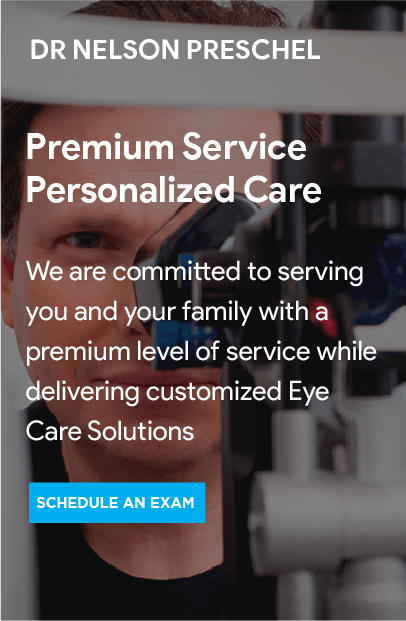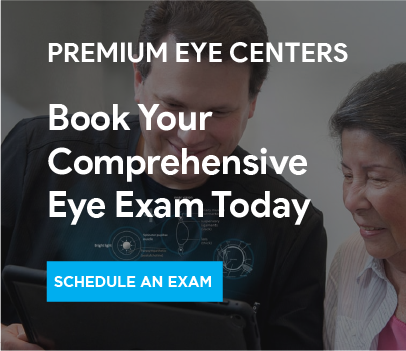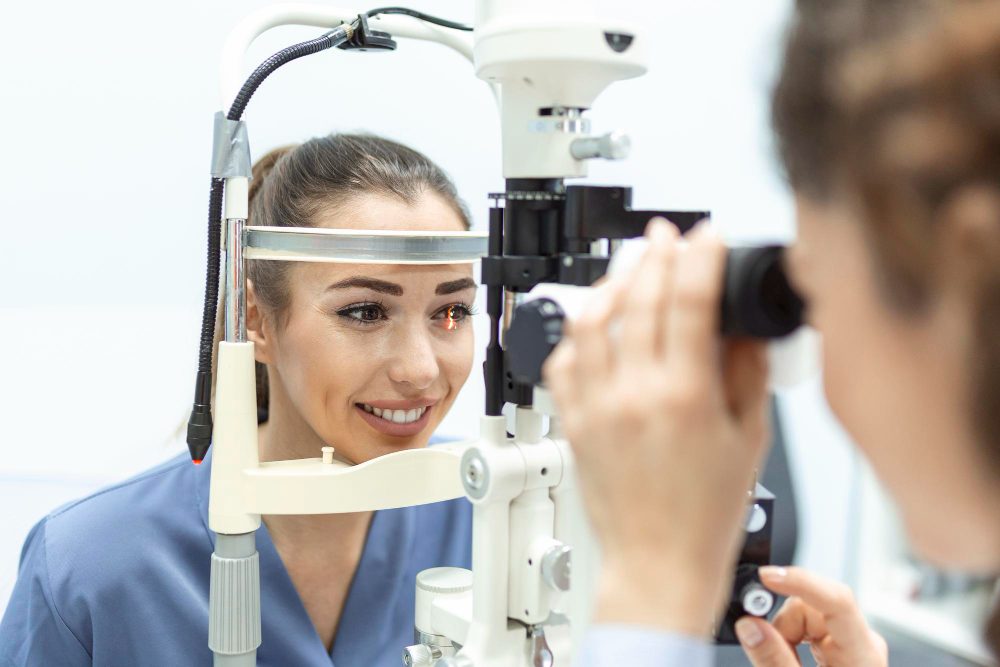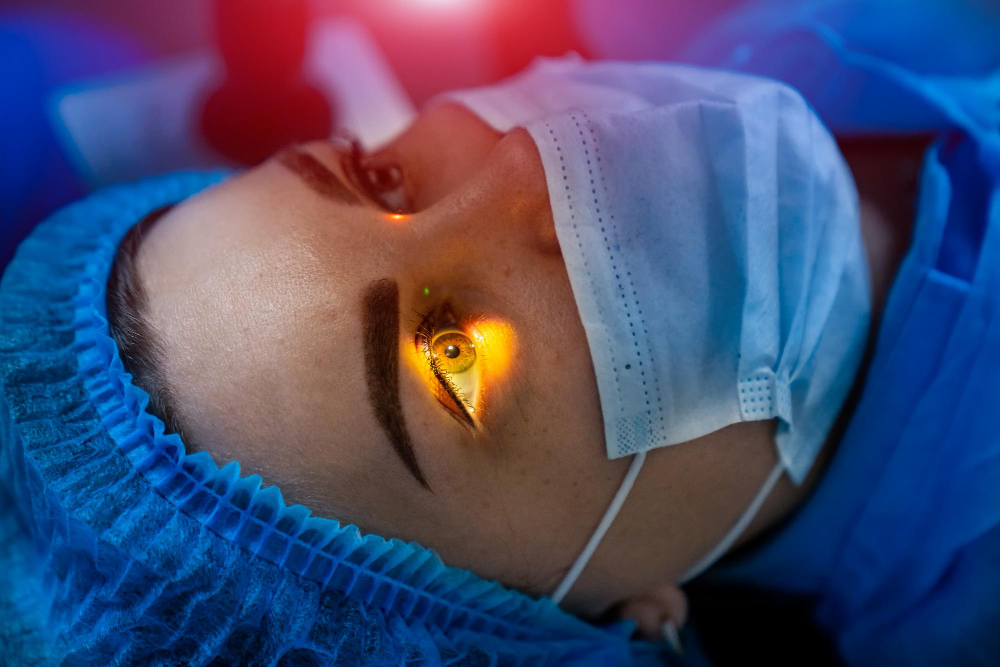Are you gearing up for cataract surgery? It’s time to dive into the world of intraocular lens implants (IOLs) and find the perfect fit for your eyes. But hey, it’s not just about picking any lens. You’ve got options – and knowing the difference between monofocal and multifocal lenses is crucial.
Think about your lifestyle: Are you always on the go, soaking up outdoor adventures? Maybe you’re a bookworm who loves losing yourself in novels, or a professional juggling a busy schedule. Your daily activities are key in choosing the right IOL, as each type offers unique benefits tailored to different needs.
Whether you’re near-sighted, far-sighted, or dealing with astigmatism, this guide is here to simplify your decision. So, let’s break down these lens options and find the best match for your eyes and lifestyle
Understanding the Key Differences: Monofocal vs Multifocal Lenses
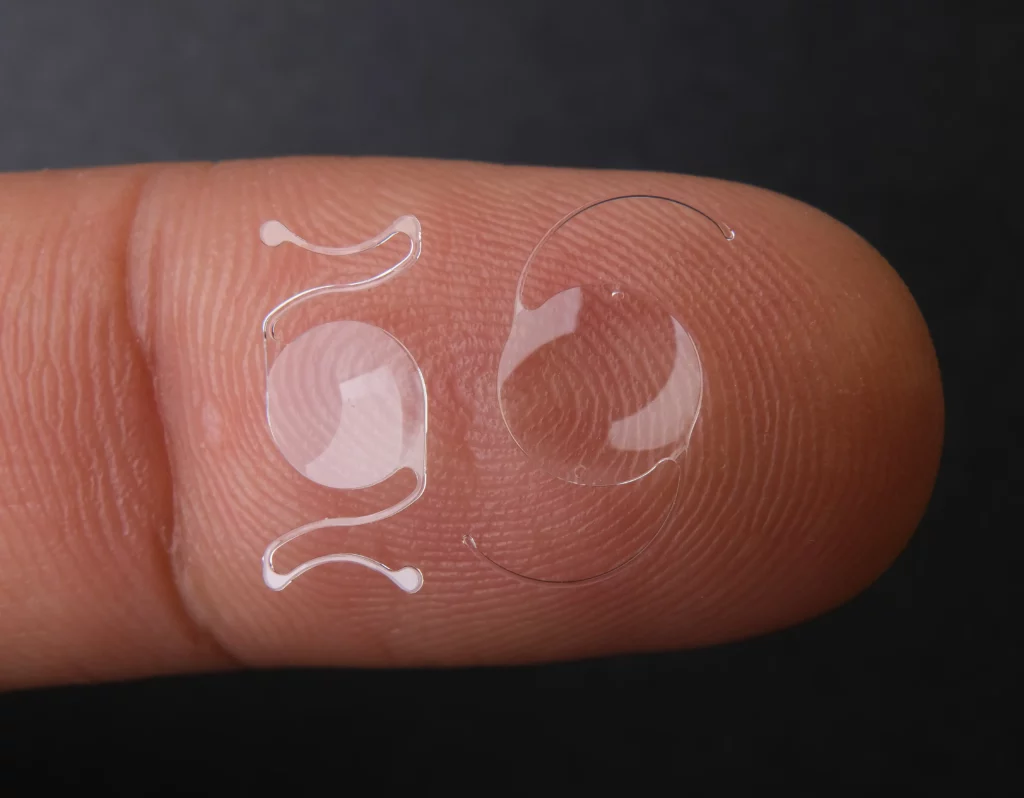
Ever wondered what sets monofocal lenses apart from multifocal ones, especially after cataract surgery? Monofocal vs Multifocal is all about how they focus. Monofocal lenses are like specialists, focusing sharply at one distance, be it near, intermediate, or far. However, you might still need glasses for other distances.
On the other hand, multifocal lenses are the multitaskers in the world of vision correction. They’re designed to provide clear vision at multiple distances – near, intermediate, and far. This means they can significantly reduce, or in some cases, eliminate your need for glasses. They’re a go-to choice for those looking to free themselves from the hassle of multiple eyewear options post-surgery
Monofocal Lenses: A Closer Look for Cataract Surgery Patients
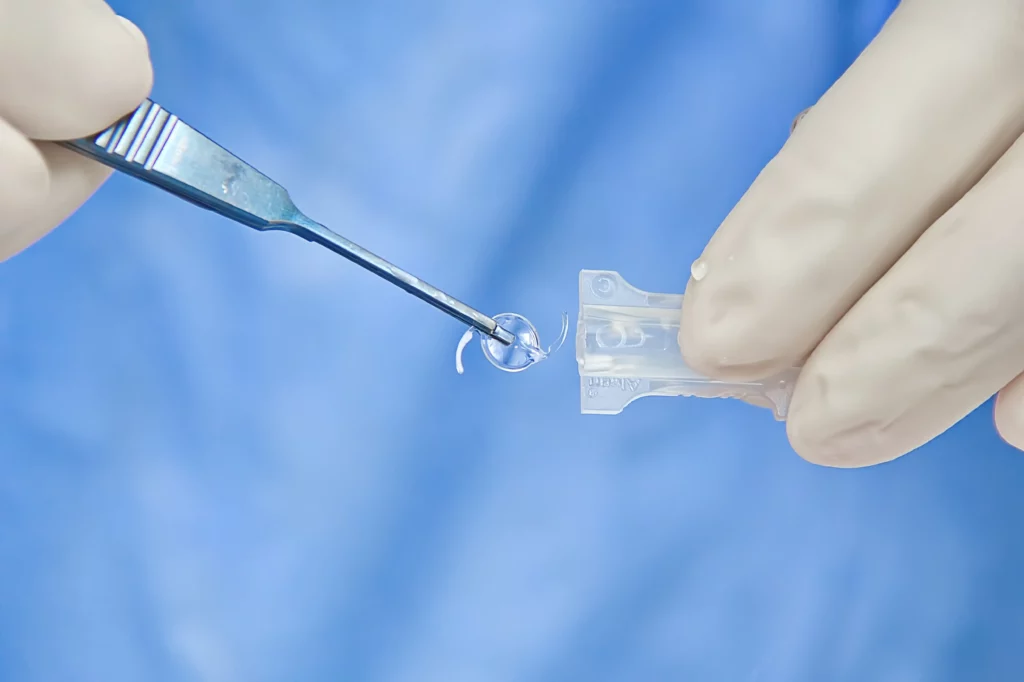
Thinking about monofocal lenses for your cataract surgery? Let’s break down what these lenses are all about in simple terms. Monofocal IOLs (Intraocular Lenses) are like your reliable one-trick ponies – they focus clearly at just one specific distance, whether it’s for near, intermediate, or far vision. This means they’re tailor-made for clarity at your chosen distance, but they don’t juggle between different ranges.
Why Consider Monofocal Lenses? Let's Dive In:
- Crystal Clear Distance Vision: Setting your sights far? Monofocal lenses shine here. They bring things like driving, watching TV, or spotting friends across the room into sharp focus.
- Consistency is Key: These lenses have a track record. They’ve been used for years, giving surgeons a reliable map to plot out your vision’s future with precision.
- Friendly on the Wallet: If budget is a big deal for you, monofocal lenses are often less pricey than their multifocal counterparts.
- Say Goodbye to Heavy Glasses (At Least Sometimes): If you’re aiming for distance vision, you might find you’re reaching for your glasses less. Close-up work might still need some help, but for everything else, it’s a lighter load on your nose.
- Fit and Forget: Once these lenses are in, there’s no fiddling needed. They do their job day in, day out, without any extra effort from you.
- Shine in Low Light: Night owls, take note! If you do need glasses post-surgery, monofocal lenses often offer better vision in dim settings compared to multifocals.
So, if you’re leaning towards a straightforward, cost-effective solution for your cataract surgery with clear perks in certain areas, monofocal lenses could be your perfect match!
Considering the Downsides: The Limitations of Monofocal Lenses
Monofocal lenses have their perks, but it’s just as important to talk about the flip side. Understanding the limitations of monofocal lenses can help you make an informed decision for your cataract surgery:
- One Distance at a Time: The major catch with monofocal lenses is their single focus point. If they’re set for distance, you’ll need reading glasses for the fine print, and vice versa. It’s a trade-off between clear vision at one range and dependence on glasses for others.
- Hello Again, Glasses: Whether it’s for near tasks, computer work, or something in-between, you might find yourself reaching for glasses more often than you’d like with monofocal lenses.
- Depth Perception Dilemmas (with Monovision): Opting for monovision, where each eye is set for a different range (one for near, one for far), can be a game-changer. But beware, it might mess with your depth perception, especially if you’re new to this setup.
- The Multifocal Temptation: If you choose distance vision but long for clear near vision too, constantly switching to reading glasses can be a hassle.
- Prescription Updates: Your eyeglass prescription isn’t set in stone. Changes over time mean you might need to update your specs to keep up with your vision needs.
- Set Focal Point: Unlike their multifocal or accommodating cousins, monofocal lenses don’t adapt to different distances. This could be a deal-breaker if your day demands sharp vision at varied ranges.
In sum, while monofocal lenses offer clear benefits, they also bring along a set of compromises. It’s all about weighing these against your personal needs and lifestyle to find your ideal vision solution post-cataract surgery
Exploring Monovision with Monofocal Lenses: A Dual-Distance Solution
Ever heard of monovision? It’s a clever way to use monofocal lenses during cataract surgery to help you see both near and far. Here’s how it works: You get one monofocal lens for near vision (think reading a book or working on a laptop) and another for distance vision (like driving or enjoying a scenic view). This setup trains your brain to switch between eyes based on the task at hand.
The Perks of Monofocal Lenses in Monovision:
- Less Dependence on Glasses: This approach means you might not need to reach for those reading glasses or bifocals as often. One eye is fine-tuned for close-up work, and the other takes care of the distance stuff.
- Ease of Switching Focus: Imagine seamlessly shifting from reading a message on your phone to gazing out the window – that’s the convenience monovision offers.
- A Flexible View on Life: With the ability to handle near and far tasks, monovision can make your daily life more comfortable and enjoyable.
- Tried and Tested: Monovision isn’t new. It’s been a successful part of eye care for years, giving you peace of mind about its safety and effectiveness.
- Tailored to You: The beauty of monovision is its customizability. It can be fine-tuned to suit your specific visual needs and lifestyle.
- Keeping Vision Functional: While it’s not about perfect vision at all distances, monovision aims to keep your day-to-day vision practical and functional, enhancing your overall quality of life.
Monovision with monofocal lenses could be a game-changer if you’re after a balanced solution for seeing both near and far without heavily relying on glasses.
Weighing the Downsides: The Challenges of Monovision with Monofocal Lenses
Monovision might sound like a smart solution, but it’s not without its challenges. It’s crucial to understand the potential downsides of choosing monovision with monofocal lenses:
- Tricky Depth Perception: Since one eye is set for close-up work and the other for distance, judging depth can get complicated. Activities like catching a ball or estimating distances might become more challenging.
- Give It Time: Adapting to monovision isn’t instant. It’s a learning curve, where your brain needs to get used to seeing differently through each eye. This adjustment period is something to seriously consider.
- Nighttime Nuisances: Night vision can be a hurdle with monovision. You might notice glare, halos around lights, or find it harder to see contrasts in low light, making things like night driving trickier.
- Close-Up Compromises: Focusing on the small stuff, like reading fine print or intricate hobbies, might still need an assist from reading glasses, as monovision tends to favor intermediate and far sight.
- Not a One-Size-Fits-All: Monovision isn’t flexible; what you choose is what you get. If your vision needs evolve or you desire more versatile vision, you might need to look at other solutions.
- Not for Everyone: It’s not a universal fit. Some people, especially those who haven’t experienced monovision with contacts, might find it hard to adjust. Plus, it’s not always the best bet for those with certain eye conditions or jobs that require spot-on vision. Tests are essential to see if monovision is right for you.
Before jumping on the monovision bandwagon, it’s important to weigh these factors against your lifestyle and vision needs. It’s all about finding the right balance that works for you.
Multifocal Lenses: Vision Freedom Across All Distances
Step into the world of multifocal lenses, where seeing clearly at all distances becomes a reality. These lenses are like your all-in-one vision solution, equipped with different optical powers to help you focus near, intermediate, and far. They’re most effective when both your eyes are on the same multifocal page.
When you’re stuck choosing between monofocal and multifocal lenses, your lifestyle and vision goals take center stage in the discussion with your eye care professional.
Why Go Multifocal? Here’s the Breakdown:
- Wave Goodbye to Glasses (Mostly): Multifocal lenses are about reducing your reliance on glasses. Whether it’s reading a book, working on a computer, or catching your favorite show, these lenses aim to keep things clear. In fact, a whopping 95% of users report they don’t need glasses for their daily activities after getting multifocal lenses.
- One Pair to Rule Them All: Forget the hassle of swapping different glasses for different tasks. With multifocal lenses, it’s smooth sailing from one activity to another, a true boon for the active and the busy.
- Life, Upgraded: Imagine doing what you love – cooking, sports, gardening – with clear vision at any distance. Multifocal lenses can be a game-changer, enhancing your day-to-day life and how you experience the world.
In short, multifocal lenses offer a liberating blend of convenience and clarity across all ranges of vision, potentially transforming your post-cataract surgery life.
Navigating the Cons: Understanding Multifocal Lenses' Limitations
While multifocal lenses are a versatile choice, they’re not without their drawbacks. It’s important to be aware of these potential downsides to make a well-informed decision:
- Nighttime Glare and Halos: A noticeable concern for about 5-10% of multifocal lens users is experiencing halos or glare around lights at night. While this can be initially bothersome, many find that their eyes adjust after a while.
- Contrast Sensitivity: These lenses might make it a bit harder to distinguish contrasts, especially in low light. Reading in dim conditions could be more challenging, but remember, it’s generally a no-go for your eye health to read in poor lighting, lens surgery or not.
- Potential for Reading Glasses: Even with multifocal lenses, a small group of patients might still need light readers for very fine print. It’s a minor concession in a lens designed to reduce dependence on glasses for most activities.
Understanding these limitations is key in deciding if multifocal lenses align with your vision needs and lifestyle
Final Thoughts: Summing Up Your Lens Options Post-Cataract Surgery
Deciding on the right type of lens after cataract surgery is a crucial step towards clear vision and an improved lifestyle. This blog post delves into the intricacies of monofocal and multifocal lenses, offering a comprehensive guide to help you make an informed choice.
Monofocal lenses are known for their simplicity and effectiveness at one specific distance, either near, intermediate, or far. They are budget-friendly and have a proven track record of providing excellent vision for specific tasks like driving or reading. However, their singular focus point means a dependence on glasses for other ranges of vision.
Multifocal lenses, on the other hand, are the multitaskers of vision correction. They allow for clear vision at multiple distances – near, intermediate, and far – reducing the need for additional glasses. While they offer greater flexibility and convenience, they can come with downsides like nighttime glare or reduced contrast sensitivity.
We also explored the concept of monovision with monofocal lenses, a technique that uses different lens powers in each eye to provide a balance between near and distance vision. While it reduces reliance on glasses, it may impact depth perception and require an adjustment period.
Ultimately, the choice between monofocal and multifocal lenses, or opting for monovision, depends on your personal needs, lifestyle, and vision goals. Consultation with a cataract expert is essential to tailor the decision to your unique circumstances, ensuring you enjoy the best possible outcome from your surgery.
Choosing the right lens for your lifestyle requires careful thought and consideration. If you’re looking to have cataract surgery, why not book a consultation with us?

